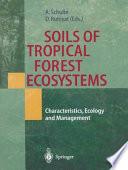
Advances in Computer Science, Engineering and Applications
Proceedings of the Second International Conference on Computer Science, Engineering and Applications (ICCSEA 2012), May 25-27, 2012, New Delhi, India
The International conference series on Computer Science, Engineering & Applications (ICCSEA) aims to bring together researchers and practitioners from academia and industry to focus on understanding computer science, engineering and applications and to establish new collaborations in these areas. The Second International Conference on Computer Science, Engineering & Applications (ICCSEA-2012), held in Delhi, India, during May 25-27, 2012 attracted many local and international delegates, presenting a balanced mixture of intellect and research both from the East and from the West. Upon a strenuous peer-review process the best submissions were selected leading to an exciting, rich and a high quality technical conference program, which featured high-impact presentations in the latest developments of various areas of computer science, engineering and applications research.
- ISBN 13 : 3642301118
- ISBN 10 : 9783642301117
- Judul : Advances in Computer Science, Engineering and Applications
- Sub Judul : Proceedings of the Second International Conference on Computer Science, Engineering and Applications (ICCSEA 2012), May 25-27, 2012, New Delhi, India
- Pengarang : David C. Wyld, Jan Zizka, Dhinaharan Nagamalai, Jan Zizka, Dhinaharan Nagamalai,
- Kategori : Computers
- Penerbit : Springer Science & Business Media
- Bahasa : en
- Tahun : 2012
- Halaman : 1100
- Halaman : 1100
- Google Book : https://play.google.com/store/books/details?id=JnjSiQiH3vkC&source=gbs_api
-
Ketersediaan :
Proceedings of the Second International Conference on Computer Science,
Engineering and Applications (ICCSEA 2012), May 25-27, 2012, New Delhi,
India David C. Wyld, Jan Zizka, Dhinaharan Nagamalai. Mohsen Sharifi Moses
Ekpenyong Muhammad Sajjadur Rahim Murugan D. N. Kaliammal N. Krishnan
Nabendu Chaki Naohiro Ishii Nasrollah M. Charkari Natarajan Meghanathan
Nicolas Sklavos Nidaa Abdual Muhsin Abbas Olakanmi Oladayo P. Ashok Babu
Patrick Seeling ...









